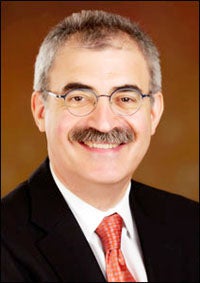Funding critical for MnSCU to fulfill mission
Published 9:55 am Monday, April 14, 2014
Guest Column by Steven Rosenstone
Now more than ever, Minnesota is counting on its state colleges and universities to help secure a prosperous future for all Minnesotans. We face significant challenges in delivering on this commitment, including the need to fill nearly 780,000 jobs before the end of the decade with employees who have completed some postsecondary education — a certificate, an associate’s degree or a bachelor’s degree.
If we don’t take the right actions now, and all those jobs can’t be filled, Minnesota’s ability to compete in the global economy – its economic prosperity – will be at risk.
So Minnesota State Colleges and Universities is taking steps today to ensure that we have the right people in the right places with the right skills – giving communities across Minnesota the best chance they have for a prosperous future. As part of our efforts, this legislative session we are advancing a bonding bill focused on three critical needs.
First, the need to keep education affordable by properly maintaining existing facilities and eliminating obsolete space. Our colleges and universities are the lowest cost and highest value post-secondary education option in Minnesota, and we intend to keep it that way. We have responsibility to maintain 28 million square feet of building space — about a third of the state’s total facilities.
As we walk our campuses, we think of them like you would your home or farm. That’s why our No. 1 bonding priority is funding for maintenance and upkeep of college and university buildings in communities throughout Minnesota.
Our goal is to make existing facilities safer, more efficient, and less expensive to operate. Our campuses have an immediate need to repair and maintain roofs and windows as well as fire safety, plumbing, electrical and heating systems that have reached the end of their useful life expectancy.
Maintenance is a common sense investment — we all know that buildings that go unrepaired eventually must be replaced at higher cost to taxpayers, not to mention higher tuition for students. We must also eliminate obsolete buildings that are not being used but still require lighting, heating, cooling and upkeep to maintain them. The money it takes to maintain these buildings would be better used to keep higher education affordable.
Second, the need to provide the practical learning spaces required to increase the success of the 430,000 students we serve every year and prepare them for jobs and careers. We need flexible classroom spaces and hands-on/real-world/high-tech training facilities that support student learning throughout Minnesota: business, manufacturing and the trades on our campuses in Bemidji and White Bear Lake; STEM in North Mankato and the Twin Cities; teacher preparation programs in St. Cloud and Winona; health and sciences in Duluth and East Grand Forks; and automotive and transportation in Rosemount and Moorhead.
Third, the need to graduate Minnesotans prepared to fill the jobs critical for our state to compete globally. This means increasing access to programs in high-growth, high-demand fields like biotech, health sciences, information technology, advanced manufacturing, renewable energy and agribusiness. Our request will enable investment in learning spaces that will increase student success in these key industry sectors.
Every project we are proposing — from the most innovative new building with state-of-the-art learning spaces to basic repair of roofs and boilers — has a direct impact on our students. We have proposed new construction only in cases where tremendous demand for a program cannot be accommodated by an existing facility.
Gov. Mark Dayton and the House of Representatives have incorporated many of our priorities into their respective bonding proposals, and the Senate is expected to release its proposal soon. We appreciate their support because it will positively impact our students and communities across Minnesota.
We look forward to working with the governor and the legislature to increase funding for critical repairs and to provide the learning spaces we need to ensure student success and Minnesota’s prosperity.
Steven Rosenstone is chancellor of Minnesota State Colleges and Universities.


